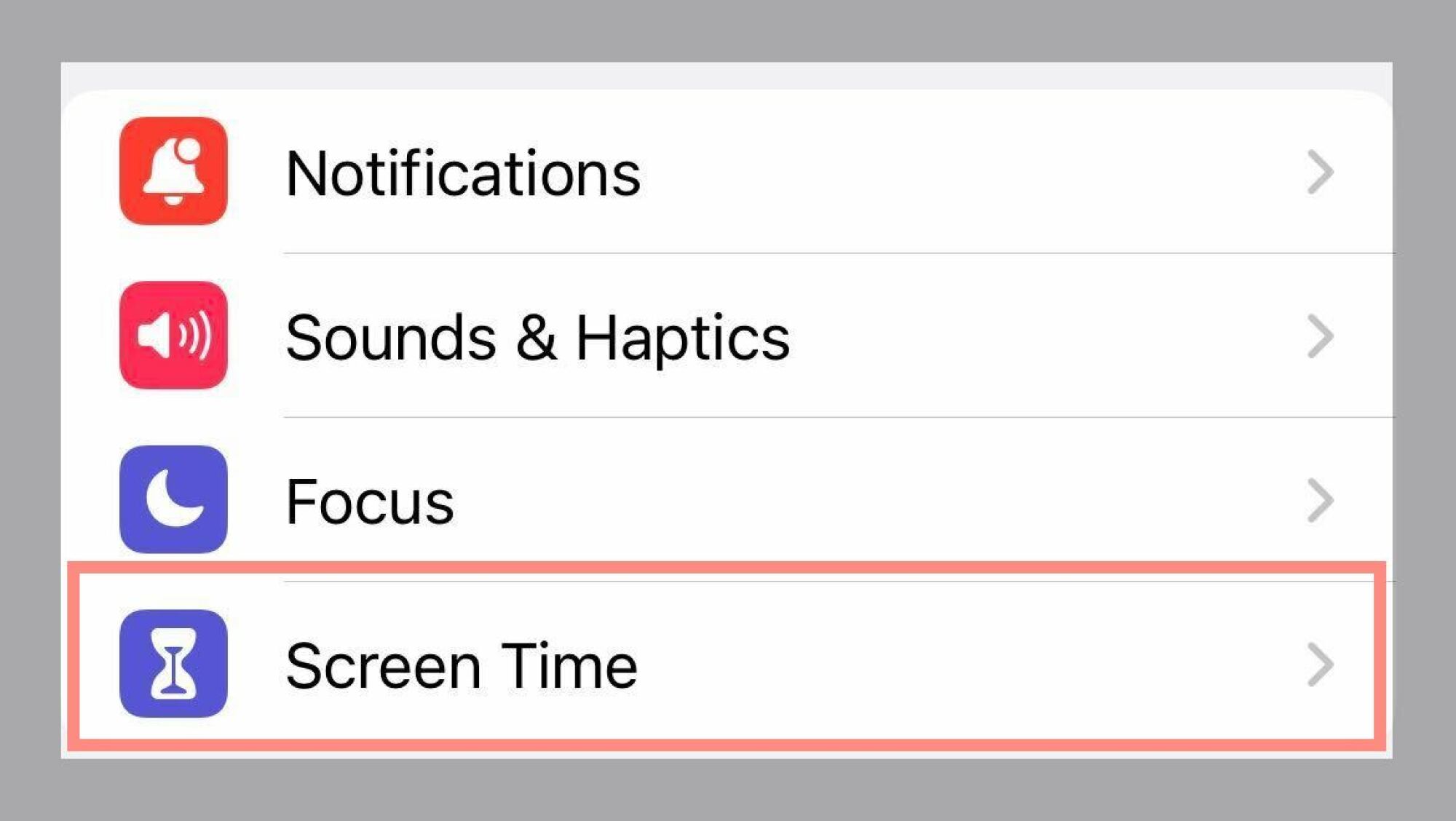Fiio Q15 review: This $399 Bluetooth DAC checks all the right boxes
Fiio releases a lot of hardware throughout the year, and when the brand announced that it would release the Q15, I thought it would be a higher-end model of the Q7. But the Bluetooth DAC costs half as much as the Q7, while retaining a similar design – albeit in a smaller size – and […]
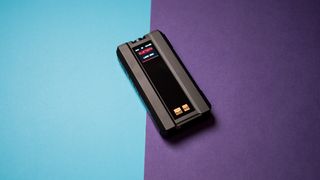
Fiio releases a lot of hardware throughout the year, and when the brand announced that it would release the Q15, I thought it would be a higher-end model of the Q7. But the Bluetooth DAC costs half as much as the Q7, while retaining a similar design – albeit in a smaller size – and many similar features.
If this sounds familiar, it’s because Fiio has made a habit of doing it. The K9 DAC also follows the same path, offering the same design and a ton of the same features as the flagship K9 Pro, but for a lot less money. Clearly, Fiio is looking to expand its DAC portfolio and list products across all price segments, and in that context, the Q15 makes a lot of sense.
The Q15 is retails for $399 at Amazon, and that’s less than half of what the Q7 costs. When I reviewed the Q7, I called it an end-game DAC that had everything you could want in a portable DAC. Fiio hasn’t changed much with the Q15; in fact, the biggest omission is the lack of a 6.35mm port: the DAC simply isn’t big enough to accommodate the jack. Otherwise, the Q15 is capable of delivering 1.6W of power, uses AKM hardware, and has all the AptX codecs you need.
Other than that, it retains a similar design to the Q7 and you get a bold aesthetic with jagged edges that look striking. What’s great is that you now have a titanium color option, so if you don’t like the look of the standard black model, the titanium variant looks much nicer.
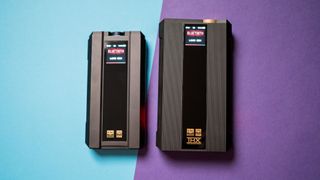
Weighing in at 305g, the Q15 is less than half the weight of the Q7, making it a great choice if you need a portable DAC. The biggest design difference is on the back, where Fiio has replaced the Q7’s leather back with a frosted glass back that’s nice to hold.
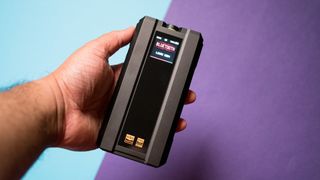
The front has a glossy insert that takes up a considerable amount of space, and the 1.3-inch TFT panel is housed in the island. Fiio reuses the same panel as the Q7, and it has the same size and resolution of 240 x 240. The panel lets you switch modes – you get USB, coaxial and Bluetooth – and you can access settings with a long press on the volume knob, giving you access to gain, maximum volume, filters and EQ. You get the same Hi-Res tags as the Q7, but there’s no THX branding.
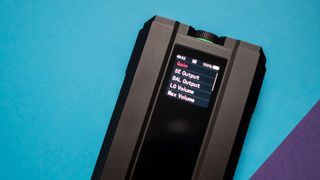
The menu interface is basic, but it allows you to easily access all of the DAC’s features without having to open Fiio’s Control mobile app. It’s a small tweak, but I like that the settings menu now has a back button that lets you return to the source page.
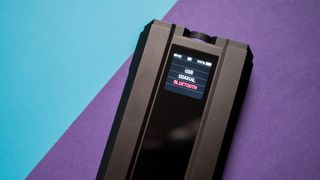
Fiio includes a carrying pouch with the Q15, but I would have liked to see a case similar to the one on the Q7. But given the positioning of the Q15, you don’t get one in the box. Along with the case, you get two USB-C to USB-C cables, a USB-A dongle, and two silicone bands that allow you to connect the Q15 to a phone.
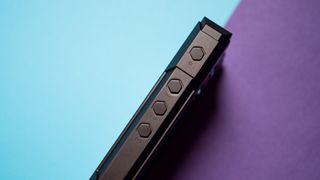
The build quality of the Q15 is phenomenal; The DAC has an all-metal chassis that uses aluminum, and in the three months I’ve had the device, I haven’t seen any issues. I also like the texture volume knob, because it makes changing the volume easier.
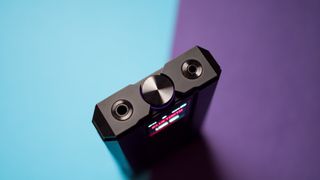
The Q15 has an unbalanced 3.5mm port and a balanced 4.4mm port located either side of the large volume knob, and as is typical with most Fiio products, an LED ring surrounds the volume button. The Q7 also has 2.5mm and 6.35mm connectors, but considering the Q15’s use case, an unbalanced and balanced connector is more than sufficient.
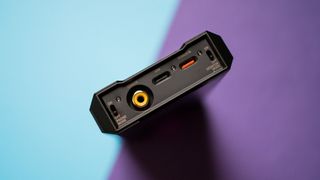
Similar to the Q7, you get control buttons on the Q15, but they are now located on the left; There is a power button and three buttons to control music playback. At the bottom you see the different ports; the Q15 has coaxial and USB connectors, and there is a second USB-C port that can be used to charge the DAC. In contrast, the Q7 has a single USB-C port for connecting and charging the DAC, and it has an optical port in addition to coaxial.
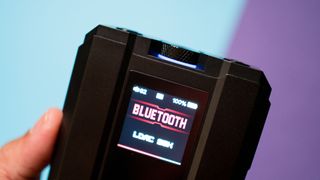
But what’s great is that you can easily switch between modes via the toggles on the bottom. You can use the Q15 in desktop mode and it doesn’t use the built-in battery in this mode. There is also a phone mode, and in this mode the Q15 uses its built-in battery.
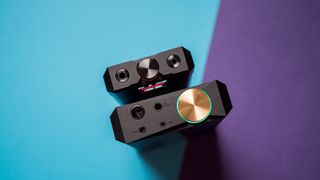
Speaking of which, the Q15 has a 5,500mAh battery that offers just over nine hours of music playback on the balanced 4.4mm port and eight hours on the 3.5mm jack. It takes over three and a half hours to charge the DAC, so it’s not something you’ll want to do during the day. This goes up to 15W when using a USB PD charger, and I left the device charging overnight most of the time.
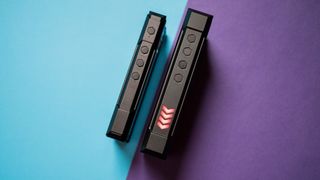
Given that the Q7 has one of the best sound signatures of any portable DAC, the Q15 has a lot to offer in this area, and its debut is promising. The DAC uses a combination of AKM’s AK4191EQ and AK4499EX, and they’re joined by the Qualcomm QCC5125, which oversees the Bluetooth side.
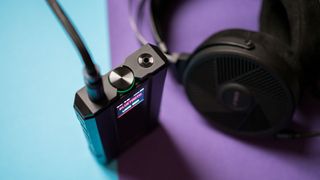
The Q15 includes all AptX codecs — AptX, AptX HD, AptX LL and AptX Adaptive — in addition to LDAC, and in USB mode it is capable of up to 768 kHz/32-bit via PCM and DSD512. If you use the coaxial connector, this goes up to 192kHz/24-bit and DSD64.
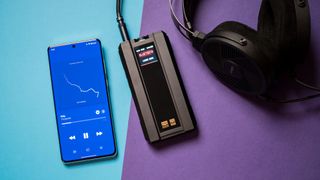
It’s the power on offer that makes the Q15 such a good choice; the DAC is capable of delivering 1,600mW of power, allowing it to drive any IEM and headphone on the market today. I’ve used it with the Audeze LCD-GX, Fiio FT5 and FT3, FX15, and a dozen IEMs over the past three months, and have had no issues.
Bluetooth 5.1 connectivity makes the Q15 as easy to use with a phone as possible, and with most Android devices offering LDAC natively (Google built it into Android several years ago), you’ll get 96kHz playback /32-bit via Bluetooth without any problems.
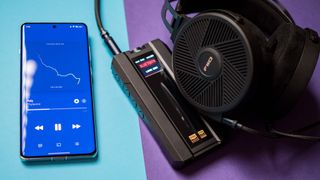
As for sound, the Q15 has no audible hiss, so even sensitive IEMs are a good pairing with the DAC. Like other Fiio DACs, the Q15 has a neutral sound that doesn’t add any coloration. That said, opting for the AKM over the regular ESS Saber models means you get a slightly different sound profile, with increased bass punch.
The bass is wonderfully detailed and textured when using the FT5, and there is a slight exuberance in the bass region that makes using the Q15 even more enjoyable. The mids are natural and have lots of character, and the highs have good extension. Imaging and dynamics are excellent, and the Q15 is the latest in a long line of Fiio DACs that get the technical details right.
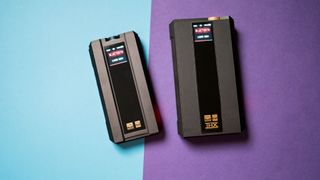
Just like the K9, the Q15 is a value leader. Yes, the Q7 has better tone and does a better job with end-gaming headsets, but if you just need a Bluetooth DAC to use with IEMs and most headphones under $1,000, it does an incredible job. The feature set is almost identical to what you get on the Q7, and its affordable price makes the Q15 a no-brainer.
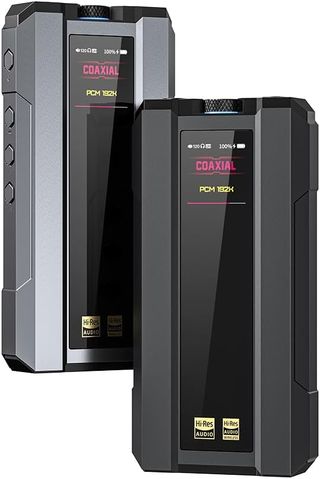
If you want a Bluetooth DAC with fantastic sound, sturdy build quality, and a massive battery, the Q15 is an easy recommendation.



